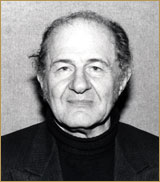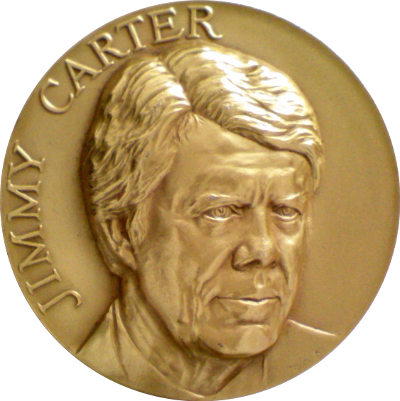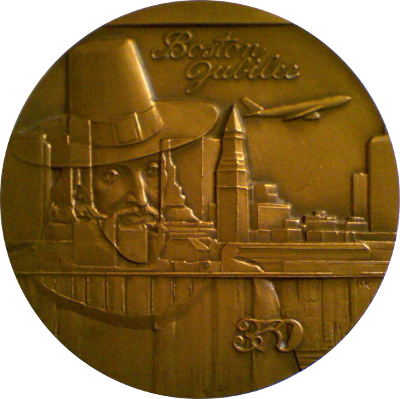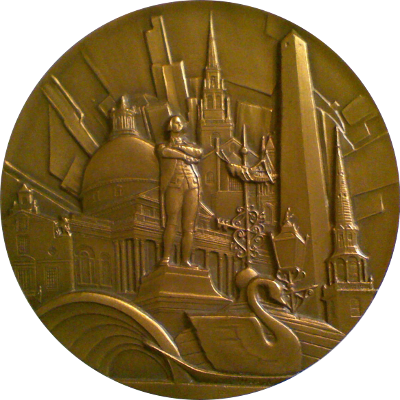Miko, or Mico, Kaufman was born in Romania between the two World Wars. He dabbled in the arts growing up, trying drawing, sculpture, and music. His father encouraged him to follow his famous and wealthy cousin, Louis Kaufman, and become a violinist. Yet even his father could see the quality of young Miko's artwork and proudly showed it off to anyone who was willing to view it.
During World War II, Miko endured three years in a concentration camp where he was forced to dig trenches. At the end of the war he traveled to Rome where he attempted to gain admission to the Fine Arts Academy. He only had one portfolio piece, a carving he had made years earlier from his uncle's broken ebony cane. As luck would have it, the man he spoke to was the Head of the Sculpture Department and Miko Kaufman was admitted on the strength of the one carving he had managed to bring with him.
He also studied in Florence before emigrating to the United States in 1951 where he quickly became known for his medallic works. He worked freelance for the Medallic Art Company, designing the models in his studio and then mailing them to the Medallic Art Company' production facilities. Occasionally, the president of MACO would fly his propeller plane to the little airport in Tewksbury, Massachusetts to visit Miko Kaufman. Over the years, Miko Kaufman designed more than 300 medals for Medallic Art Company, including 192 medals for the American Bicentennial and the Judaic Heritage series. Kaufman described this work as a positive experience that lead to other work.
One of his most prestigious commissions was the design of the National Medal of Technology. He had been invivted together with a handful of other medallic sculptors, to participate in a competition for the design and sculpture of the medal that was to be the equivalent of the Nobel prize for technology. Kaufman's design won the competition by unanimous vote.
He is recipient of many artistic awards. Among them is one from the American Numismatic Society which includes these words: "For his great ability to humanize the official and to universalize the personal."
A resident of Tewksbury, Massachusetts, Miko's art is on display throughout the United States and Europe. Some of his most inspiring public works are in Tewksbury and Lowell.
Miko has said: "If you should notice one of my public sculptures, I would like you to stop and ponder on its subject. The pause might refresh, inform, and even inspire. My work reflects on the bonds that substantiate our humanity."
Sourced mainly from Wikipedia and the National Sculpture Society.










